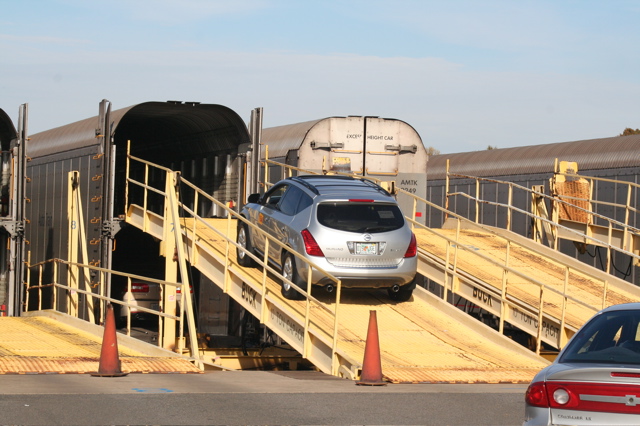Saving Amtrak By Car
If it is still running, and it probably will be, we plan to take the Auto Train later in the summer for maybe the 30th time. We don’t know the exact count, but we started using it in the early 1970s when it was launched as a private company. Amtrak did not take over until 1983. Since the 1990s, somebody in the family has ridden it every year; some years we took several trips, up and back. And not always in the summer. We took at least one round trip up for the Christmas holidays.
We obviously like the idea, and we have written about it a number of times, wondering why the concept has remained limited to just one route from central Florida to northern Virginia, close to Washington. It seems like an idea that would work on most of Amtrak’s long-distance routes.
In fact, the original Auto-Train Corporation did attempt to run a second train, after it began to make money on the initial route. It ran from its station in Sanford, northeast of Orlando, to Louisville, Kentucky. The concept seemed sound, but its engines proved too heavy for the poorly maintained track on the old Louisville and Nashville Railroad. It had derailments, followed by lawsuits. The railroad had warned of the danger of the heavy engines. The poorly executed expansion put the original company out of business in 1981, and several years later Amtrak took over. The train has been a success. It was profitable for years, and may still be. If not, it doesn’t lose much money, at least not by Amtrak’s standards.
We revisit the subject in response to the new proposed Trump budget that would cancel many of Amtrak’s trains, including Auto Train and the two regular long-distance trains that serve Florida from the northeast. We propose, as we have before, that instead of eliminating those unprofitable, but still useful long-distance trains, Amtrak combine them with auto trains. This is not an original thought. The original private Auto-Train Corporation planned to do it years ago, combining its Midwest auto train with “The Floridian,” a regular train from Chicago to Miami. Veteran rail observers may recall seeing that train, pulled by distinctive brown and orange Illinois Central diesels, on what are now the CSX tracks along Interstate 95.
The first step would be to return to the Midwest, using the existing Sanford facility to run an auto train not just to Louisville, but closer to the big Chicago market. In addition to carrying people and their cars, it would also carry carless passengers. To keep it fast (Auto Train often runs ahead of schedule) the stops would be only at major markets. Current Amtrak trains serve many small towns, but this idea would stop at only busier destinations. En route to a terminal south of Chicago, (Lafayette, Indiana seems about right) you could stop at Jacksonville, Macon, Atlanta, Chattanooga, Nashville, Louisville and Indianapolis. At 10 minutes per stop, that might add an hour or two to the trip. But so what, people on a train are not in a big hurry.
Initially, the train need not be daily. Again, train riders are not in a hurry. As traffic grows, the schedule could increase. A super terminal not too far south of Chicago could then serve as the starting point for most of Amtrak’s current long-distance trains. Five established Amtrak routes leave the Chicago area for the south and west coast. All those routes are longer than the current Auto Train (855 miles). The California Zephyr, from Chicago to near San Francisco, covers more than 2,000 miles, much of it through the spectacular Rockies and the Sierra Nevada mountains. Its 30 plus station stops could be cut in half, but include the population centers of Omaha, Lincoln, Denver, Salt Lake City, Las Vegas, Reno and Sacramento, along with a few of the more scenic vacation spots along the way. The trip currently takes a little more than two days. A few extra hours would hardly affect ridership.
On those long routes there would be the opportunity to add facilities to load and unload vehicles at least once. It is surprising how fast Amtrak crews (shown above) can do that right now. It would not appreciably delay the train and greatly add to its usefulness.
Ultimately we could see the idea working on the shorter eastern routes, using the Lorton, Virginia Auto Train terminal as a starting point for cross country auto trains along existing Amtrak routes to New Orleans and Chicago.
Would these hybrid trains make money? Probably not, but they surely would lose a lot less than they do now and likely cease the clamor to destroy a valuable national asset.
Image via

